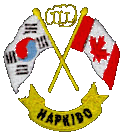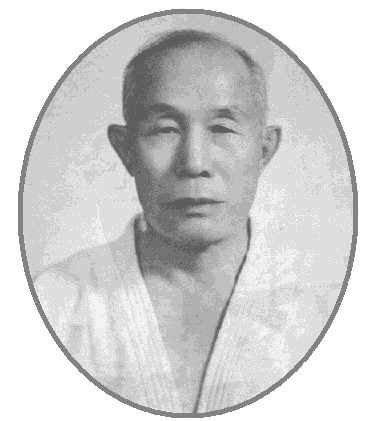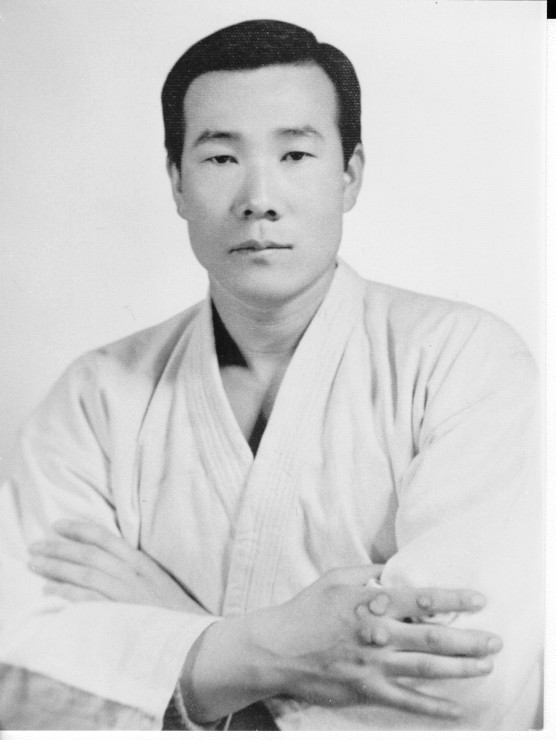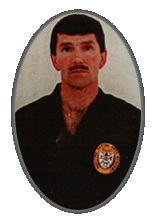


In 1904 Grandmaster Choi, Yong Sul was born in the Korean province Chung Buk. There he lived in a village named Yong Dong. During this time the Japanese occupied Korea. At the age of eight Grandmaster Choi met a Japanese candy merchant named Morimoto. Mr. Morimoto had no son and when he returned to Japan he kidnapped GM Choi taking him away as his adoptive son. But GM Choi resisted vehemently against this adoption and turned out to be so difficult that Morimoto left him to his fate only a short time after their arrival in the village of Moji, Japan.
GM Choi went alone to Osaka and earned his living by begging. After being picked up by the police, he came to into a buddhistic temple to a monk named Kintaro Wadanabi. There he lived for 2 years. Life in Japan was not easy for GM Choi as he spoke poor Japanese and was a foreigner, therefore he had big problems at school. Furthermore he was often flogged by other children. So Kintaro Wadanabi decided to send GM Choi to his friend Sokaku Takeda (1859-1943) the head of Daito-Ryu Aikijujutsu.
As it seems to be clear that Japan was going to loose World War II, Sokaku Takeka committed suicide by starving himself to death. Before he died he ordered GM Choi to return to Korea. On his way back to Korea GM Choi´s whole luggage was stolen at the Station of Younson: including all his money and the certificates he had obtained from Sokaku Takeda. GM Choi settled in Korea in the village of Taegu, situated in the Kyung Buk province, and changed his name back to Choi, Yong Sul.
Here, he and his family survived by selling rice cookies for several years. However, February 21st 1948 changed the tide of history. After a few years GM Choi had saved a small amount of money and had bought some pigs. To fatten them he needed grain, which he earned in a Korean brewery producing Korean wine. In this brewery the employees were paid with grain for helping to pump water from a subterranean source.
That day, February 21st some people tried to take up Choi’s position in the queue in front of the grain counter. GM Choi not only defended himself successfully against the attackers, but he did it with the greatest of ease. Suh, Bok Sup, manager and son of the brewery’s owner watched the fight from his office. He was impressed by the techniques with which GM Choi could defend himself. Suh, Bok-Sup owned the first Dan in judo, and, therefore, recognized that GM Choi was a master in a very effective material art.
He called GM Choi in his office and asked him to teach him. GM Choi agreed, and Suh, Bok-Sup paid for his training lessons with money and grain. The fact, that GM Choi’s first student held the first Dan in judo had an effect on the development of Hapkido. All Defense techniques against holds at the wrist, sleeve, collar and against judo throws go back to these roots. Of course, in the beginning Suh, Bok-Sup was mainly interested in how to defend himself against judo attacks.
GM Choi named the material art, he had learned, Yawara. GM Choi changed the name of his material art several times. Among others he called it: Yu Sul (Soft Art), Yu Kwon Sul (Soft Hand Art), Hapki Yu Kwon Sul (In Unit with Ki Soft Hand Art)
A few years later GM Choi became a bodyguard and head of the security department of Suh, father to Bok-Sup, and also a congressman. On February, 12th 1951 GM Choi and Suh, Bok-Sup together opened up a Dojang named Korean Yu Kwan Sool Hap Ki Dojang. In 1958 GM Choi, Suh and Bok-Sup decided to change the name of the material art taught by them into HapKiDo. Statement of Master Suh, Bok-Sup in an interview) There are different statements on who used the name HapKiDo first. Another variation is, that Ji, Han-Jae created the name and then passed it to GM Choi, in order to honor him.
Sometime 1958 after GM Choi opened up his own Dojang. In Suh, Bok-Sups Dojang also taught Kim, Moo-Hyun, who, accord- ing to Suh, Bok-Sup, created the HapKiDo kicks. Kim, Moo-Hyun had learned these kicks in various Korean temples. Kim, Moo-Hyun had a very close contact to GM Ji, Han-Jae and stayed some time in GM Ji, Han-Jae‘s Dojang in Seoul.
It is very likely, that during this time a number of HapKiDo kicks were developed. Sometimes Suh, Bok-Sup went to Seoul and taught there at the university.
In 1963 GM Choi became chairman of the newly founded Korean Kido Association, an umbrella organization of all Korean material arts, acknowledged by the Korean government.
In 1982 GM Choi traveled into the USA, trying to combine HapKiDo. He appointed Chang, Chin-Il his successor and hoped, that he would be able to unite the HapKiDo masters living in the USA. But GM Chois wish was not fulfilled. GM Choi died 1986 at the age of 82 and was buried in Taegu.
Grandmaster Choi, Yong Sul visited the United States in June of 1982 with the purpose of unifying Hapkido. GM Choi knew his life was near its end. His greatest wish was that all Hapkido would be united. He came to New York to name his successor and thereby insure the continuity of the art he had brought to Korea so many years before.
Much had changed in GM Choi’s lifetime. The culture in which GM Choi learned his art was that of a wealthy nobleman in pre-war Japan. This was in stark contrast to the practice of martial arts in 1980’s America. Martial arts were being mass marketed in America. Time consuming traditional methods of instruction were sacrificed in order to accomodate the American appetite for immediate results. Sadly, this state of affairs extended to many schools professing to teach Hapkido.
GM Choi was dissatisfied with the state of Hapkido. Some Hapkido black belts had broken off to form their own schools and organizations, promoting themselves and others to artificially high ranks.
Hapkido's problems were not just organizational. Different schools taught different patterns of technique. Many instructors were spreading unfounded teachings, describing their techniques as Hapkido when they were not. These instructors found that student interest was easier to maintain when the techniques were easily mastered and promotions occurred quickly.
In an attempt to reverse the digression that Hapkido was experiencing, GM Choi gave his endorsement to ninth degree black belt, Chinil Chang. GM Choi hoped Mr. Chang would dominate the imposters and create a single Hapkido organization. Mr. Chang did not share Mr Choi's vision, and did not act to unify Hapkido.
At present there are many Hapkido organizations. Most teach a hard style martial art and incorporate a few "soft" techniques, sometimes called self-defense techniques. Maritime Martial Arts Academy teaches the soft style of GM Choi.

Founder

1st Generation

2nd Generation